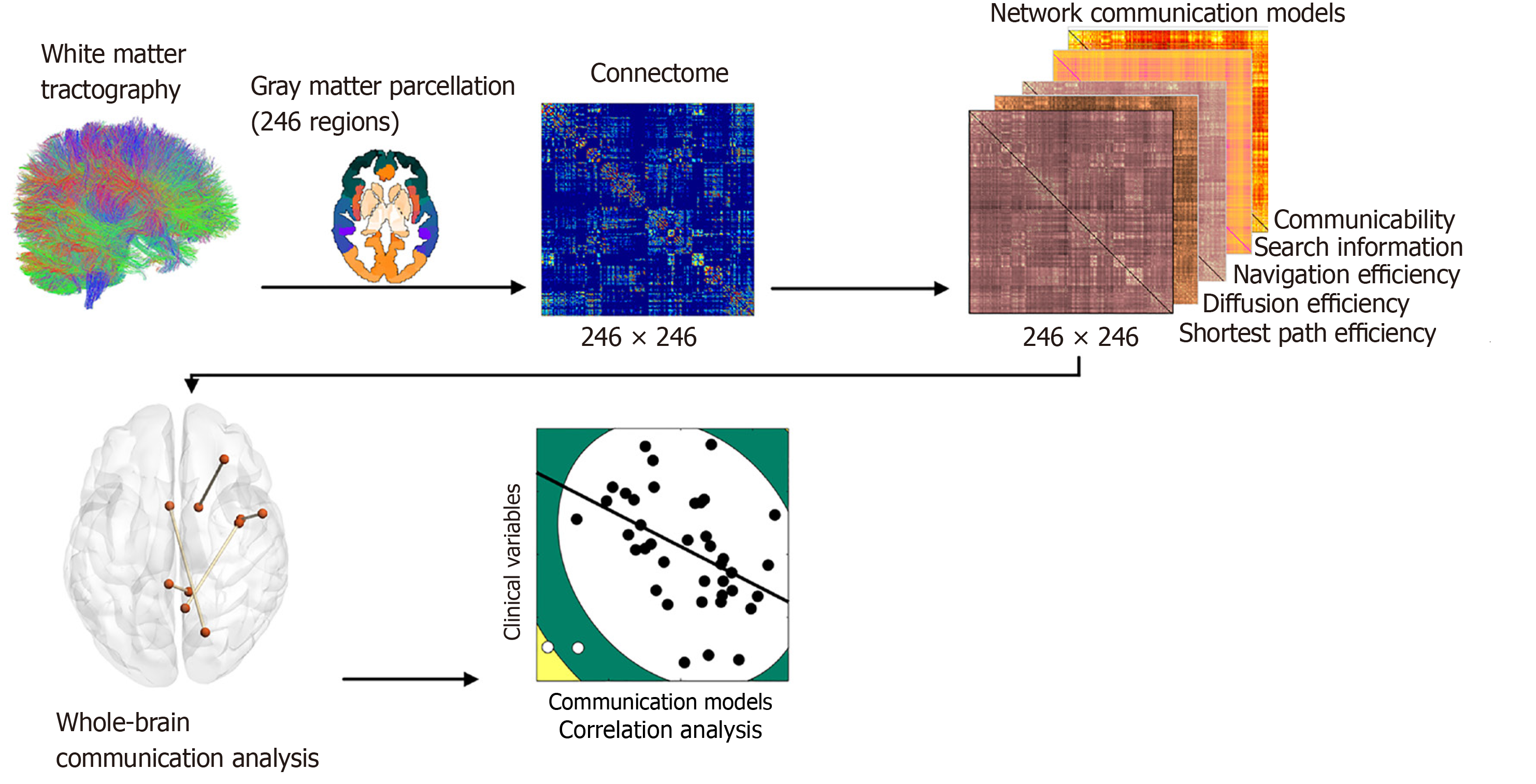Copyright
©The Author(s) 2025.
World J Psychiatry. May 19, 2025; 15(5): 102706
Published online May 19, 2025. doi: 10.5498/wjp.v15.i5.102706
Published online May 19, 2025. doi: 10.5498/wjp.v15.i5.102706
Figure 1 Methodology overview.
Follow the direction indicated by the arrow, first white matter tractography applied to diffusion magnetic resonance imaging data was used to map undirected weighted adjacency matrices respecting the structural connectivity between n = 246 cortical regions. Shortest path efficiency, navigation efficiency, diffusion efficiency, search information, and communicability were then computed between every pair of regions to generate communication matrices. In the analysis phase, a whole-brain communication analysis was conducted and subsequently the between-group significantly different connections were explored in association with clinical variables.
- Citation: Wang S, Qin JL, Yang LL, Ji YY, Huang HX, Gao XS, Zhou ZM, Guo ZR, Wu Y, Tian L, Ni HJ, Zhou ZH. Structural network communication differences in drug-naive depressed adolescents with non-suicidal self-injury and suicide attempts. World J Psychiatry 2025; 15(5): 102706
- URL: https://www.wjgnet.com/2220-3206/full/v15/i5/102706.htm
- DOI: https://dx.doi.org/10.5498/wjp.v15.i5.102706









